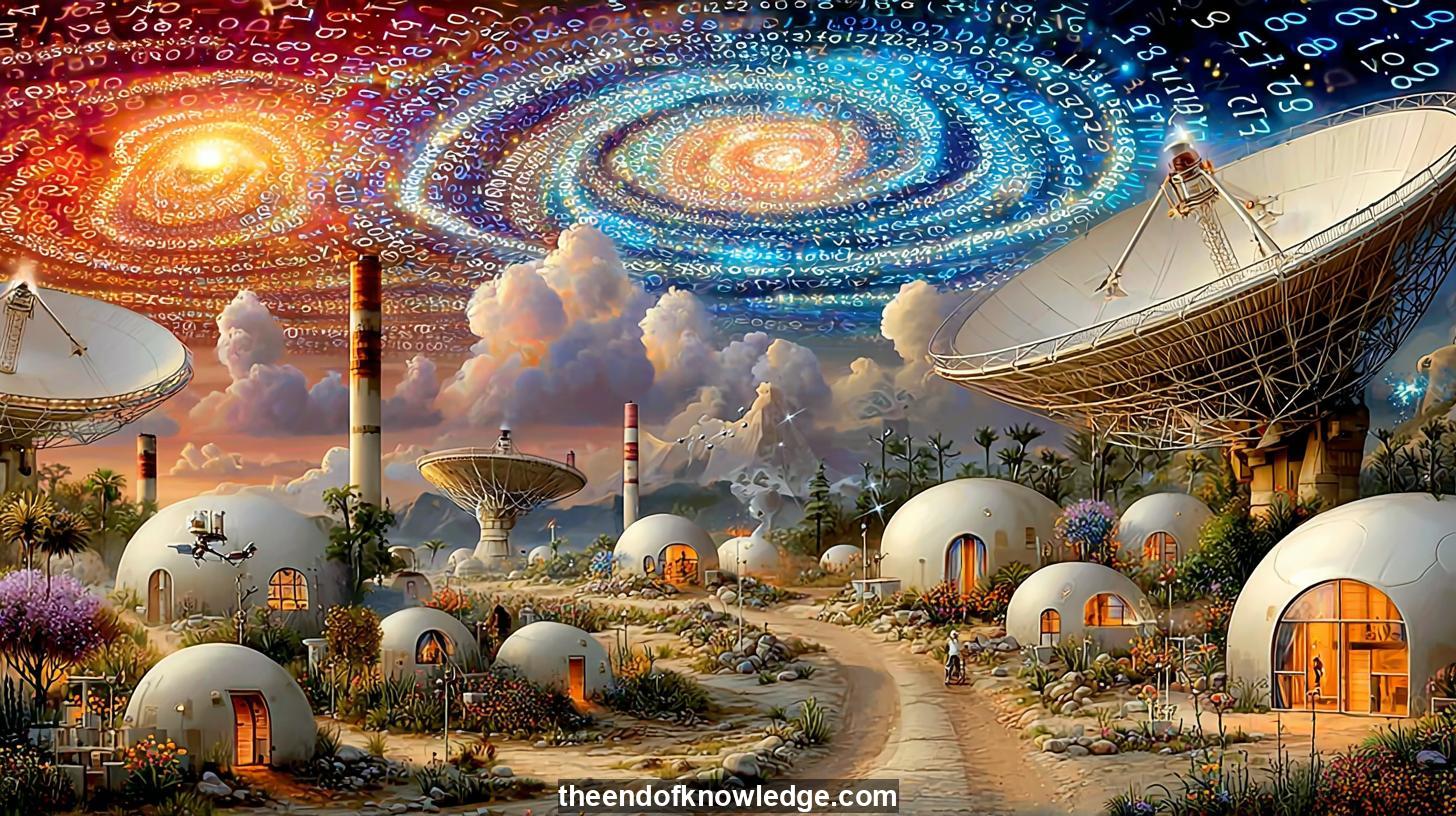 >
>
Concept Graph, Resume & KeyIdeas using Moonshot Kimi K2 :
Resume:
The conversation opens with a warm welcome to Juan J. Merelo, a computer-science professor and lifelong AI researcher whose fascination began with Asimov’s robots and matured through neural networks in the late eighties. He recounts the thrill of early experiments with Hopfield nets, Boltzmann machines and self-organising maps, and how those threads led to evolutionary computation, artificial life and today’s complex adaptive systems. Merelo insists that every era redefines intelligence: once the stuff of science-fiction, now an emergent property of search and learning powered by unimaginable scale.30 Key Ideas:
1.- Juan Merelo began with Asimov robots and 1980s neural nets before embracing evolutionary computation.
2.- Creativity is framed as problem-solving dialogue where AI widens artistic palettes without eclipsing human imperfection.
3.- Rich Sutton’s bitter lesson warns general search and learning methods surpass hand-crafted control.
4.- Multi-agent AI will evolve ecological niches like biological species, complicating alignment and prediction.
5.- Self-replicating code such as AlphaEvolve demonstrates recursive improvement beyond current reproducibility.
6.- Training trillion-parameter models consumes nation-scale energy, pushing nuclear and hydrogen storage solutions.
7.- Open-source small models offer privacy and democratized access amid opaque corporate megasystems.
8.- Energy constraints may cap AI growth unless hardware or algorithmic efficiencies break Wall’s law.
9.- Regulation struggles against global competition, corporate secrecy and stealth backdoors in quantized models.
10.- Human creativity retains value through context, process and emotional resonance beyond generative speed.
11.- Art history studies leverage AI for pigment recovery and meme generation while preserving Kintsugi imperfection.
12.- Complex systems theory shows unpredictable emergent behaviour when agents interact beyond simple statistics.
13.- Quantum computing threatens encryption yet also enables radar immunity and massive parallel search.
14.- Reproducibility gaps between Google-scale compute and academia risk scientific obscurantism.
15.- Evolutionary algorithms written in C++ via Evolving Objects library enable meta-evolution with minimal energy.
16.- Agentic economies promise micro-program automation but face sustainability and monopolistic pricing risks.
17.- Learning programming remains vital for problem framing, debugging and ethical oversight amid AI code generation.
18.- Junior developer roles are automated first, creating a generational gap in deep-tech expertise.
19.- University curricula must shift from coding syntax to systems thinking, ethics and interdisciplinary insight.
20.- Universal evolution laws apply to AI niches, ensuring co-adaptation rather than human replacement.
21.- Planktonic Representation Hypothesis suggests diverse neural nets converge toward shared latent truths.
22.- Language models mediate reality through language, yet intelligence encompasses 27 undefined processes.
23.- Backdoors in quantized or distilled models pose undetectable security risks requiring transparent audits.
24.- Free software philosophy views code as evolving process, resisting product-centric monopolization.
25.- Artistic tools evolve from oil pigments to AI prompts, each mastering medium conveys unique expression.
26.- Nuclear energy and breeder reactors offer carbon-neutral, geopolitically stable power for data centres.
27.- Democratized AI research tools like Deep Research lower barriers, accelerating global scientific output.
28.- Human agency persists in defining problems, curating datasets and interpreting AI outputs responsibly.
29.- Rapid technological change demands lifelong learning and humility toward emerging unknowns.
30.- Future value lies in cultivating beauty, ethics and human connection beyond algorithmic efficiency.
Interviews by Plácido Doménech Espí & Guests - Knowledge Vault built byDavid Vivancos 2025